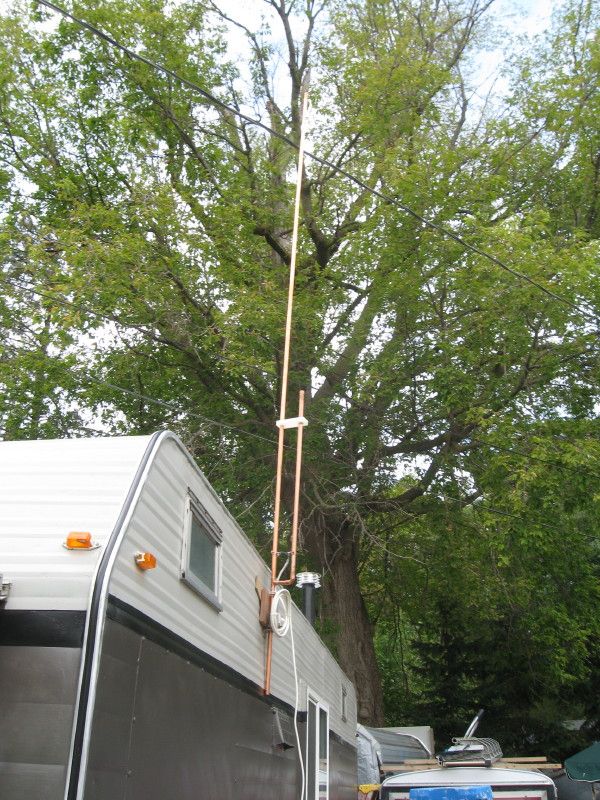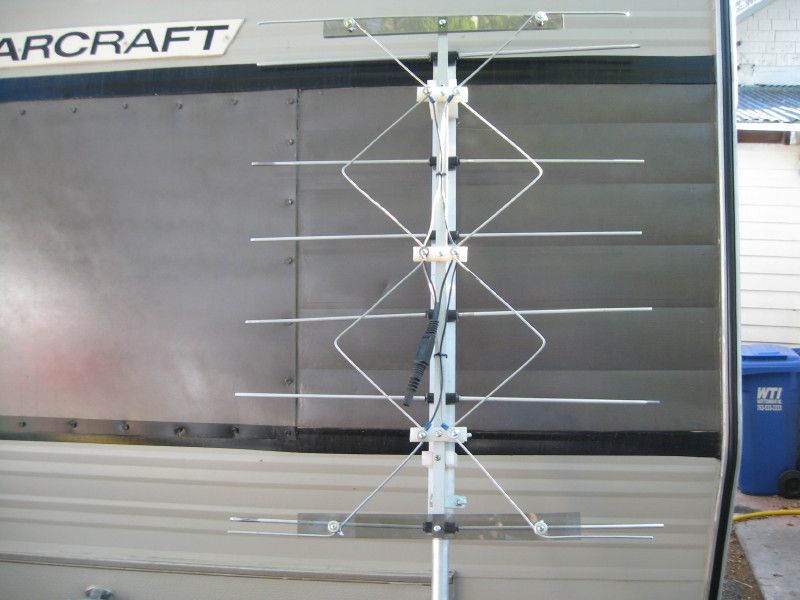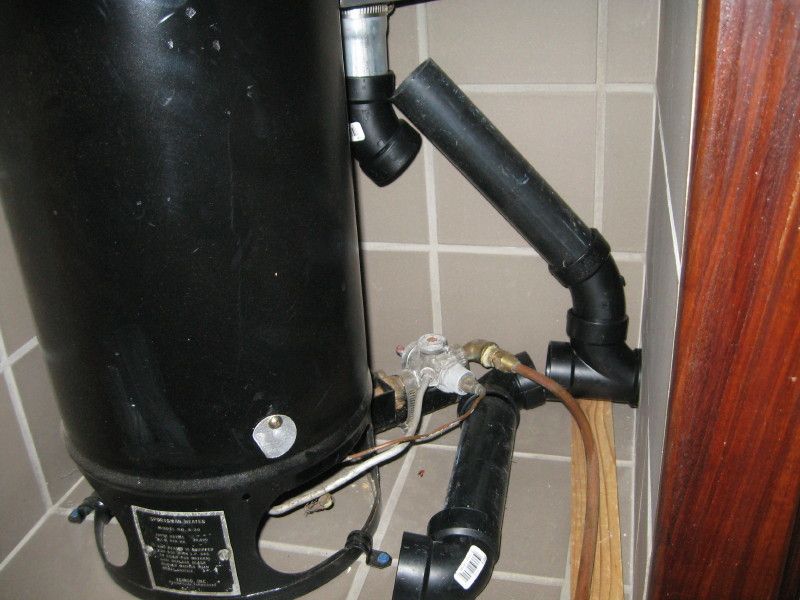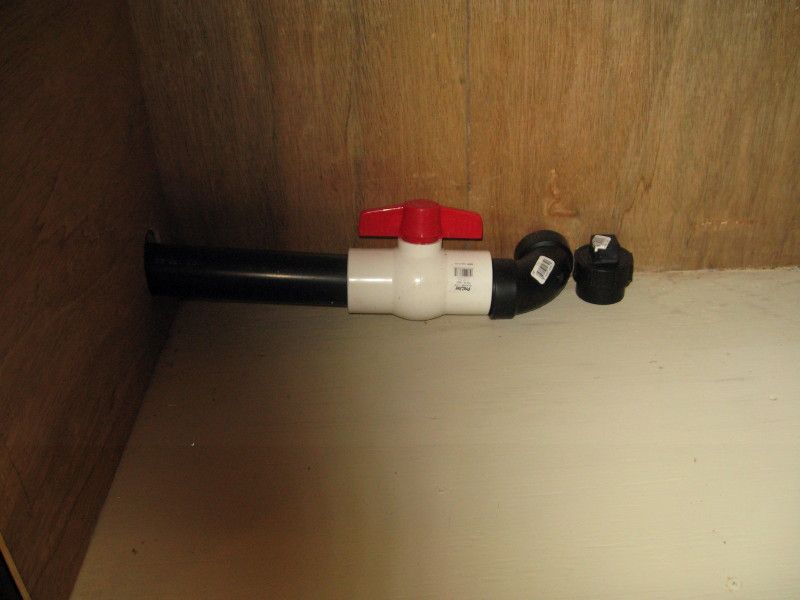Forum Discussion
westend
Sep 09, 2012Explorer
Getting a few more things squared away. Antennas, I built two, one an FM J-pole to listen to my favorite FM jazz stations and the other, a UHF Gray-Hoverman array for OTA digital TV.


Today, I'm working on an improvement for the propane heater. Trying to keep the heating as efficient as possible, I was doing some reading on exhaust vents, air supply for combustion, and such so thought I might be able to improve on what I had. Most of the sources I had on hand all agreed that the amount of air that exits the inside of a stucture through the exhaust stack while a heater of this type is used, is drawn from the surrounding area and exits along with the flue gasses. The amount of this incidental air is 3 -> 4 times the amount of heated air from the combustion chamber. That is a lot of air flying up the exhaust vent and it has to create a negative pressure inside the cabin, meaning air entering through doors and windows, especially if the structure is sealed tightly. Enter the WE-EGSAD1000 (Westend Exhaust Gas Supplimentary Air Displacement Model 1000):

I have the input ABS pipe "T'ed" as it enters the heater area, one pipe for the exhaust and the other for the combustion chamber. I made a hood for that back of the heater with a steel pipe that fits into the 1 1/2" ABS fitting. As pictured, I haven't glued it all together. I found that I need to enlarge the hole that the input comes through so that my pipes fit correctly.
Under the kitchen cabinet will be this ball valve that will control how much outside air can be delivered to the heater. If the heater isn't in use, I'll be able to shut it off.

I hope my thermal engineering on all of this is OK. I've piped outside combustion supply air into many appliances, including the heater in the Hilton but am in new territory with the exhaust. I guess if it doesn't work on the exhaust part, that branch can easily be eliminated.


Today, I'm working on an improvement for the propane heater. Trying to keep the heating as efficient as possible, I was doing some reading on exhaust vents, air supply for combustion, and such so thought I might be able to improve on what I had. Most of the sources I had on hand all agreed that the amount of air that exits the inside of a stucture through the exhaust stack while a heater of this type is used, is drawn from the surrounding area and exits along with the flue gasses. The amount of this incidental air is 3 -> 4 times the amount of heated air from the combustion chamber. That is a lot of air flying up the exhaust vent and it has to create a negative pressure inside the cabin, meaning air entering through doors and windows, especially if the structure is sealed tightly. Enter the WE-EGSAD1000 (Westend Exhaust Gas Supplimentary Air Displacement Model 1000):

I have the input ABS pipe "T'ed" as it enters the heater area, one pipe for the exhaust and the other for the combustion chamber. I made a hood for that back of the heater with a steel pipe that fits into the 1 1/2" ABS fitting. As pictured, I haven't glued it all together. I found that I need to enlarge the hole that the input comes through so that my pipes fit correctly.
Under the kitchen cabinet will be this ball valve that will control how much outside air can be delivered to the heater. If the heater isn't in use, I'll be able to shut it off.

I hope my thermal engineering on all of this is OK. I've piped outside combustion supply air into many appliances, including the heater in the Hilton but am in new territory with the exhaust. I guess if it doesn't work on the exhaust part, that branch can easily be eliminated.
About Travel Trailer Group
44,055 PostsLatest Activity: Dec 23, 2025